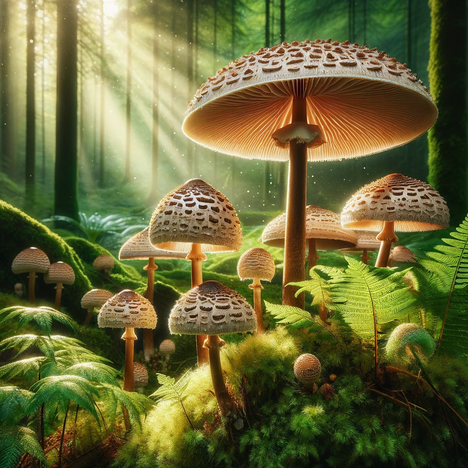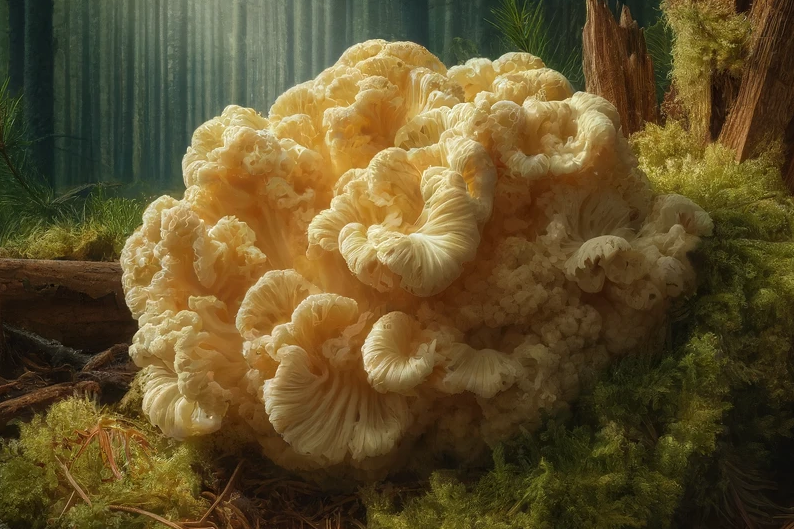Common giant umbrella mushroom

What is the giant umbrella mushroom?
The giant umbrella mushroom is a large, easily recognizable mushroom known for its characteristic umbrella-shaped cap. It grows in forests, parks and meadows and is prized for its culinary qualities. However, despite its popularity as an edible mushroom, its use in dog food should be viewed with caution.
Nutritional profile and potential benefits
Rich in antioxidants
The common giant umbrella mushroom is rich in antioxidants, which can help reduce oxidative damage in cells. These antioxidants could theoretically boost a dog's immune system and contribute to overall health.
Source of fiber
Like many mushroom species, the common giant umbrella mushroom provides a good source of fiber, which can be beneficial for a dog's digestive health. Fiber supports healthy intestinal flora and can help regulate bowel movements.
Possible risks and disadvantages
Toxicity risk
Although edible for humans, the common giant umbrella mushroom can be toxic to dogs. Dogs' digestive systems process mushrooms differently than humans, which can lead to digestive disorders, poisoning and, in severe cases, life-threatening conditions.
Risk of confusion
Another risk is the high risk of confusion between the common giant umbrella mushroom and poisonous mushroom species. Even experienced pickers can make mistakes, which can lead to serious poisoning in dogs.
Allergic reactions
As with any new ingredient in a dog's diet, there is a risk of allergic reactions to the common giant umbrella mushroom. These can range from mild skin reactions to severe anaphylactic shock.
Recommendations for dog owners
In view of the potential risks, it is advisable to avoid using the giant umbrella mushroom in dog food or at least to treat it with great caution. Should dog owners nevertheless wish to offer their four-legged friends mushrooms, it is recommended that they only do so in small quantities, well cooked and after consulting a vet.
The common umbrella mushroom may be a tasty addition to the human diet, but in dog nutrition it carries risks that should not be ignored lightly. The health and safety of the dog is always paramount, and the advice of a professional is essential if there is any uncertainty about the diet. Ultimately, it is the responsibility of the dog owner to ensure a safe and nutritious diet for their four-legged friend.
If you notice any signs of hypersensitivity or poisoning in your dog, you should see your vet immediately. We are not a substitute for a vet, but we try to be as accurate as possible. Every dog reacts differently and we recommend you get a second opinion or consult your vet if in doubt.
Stay healthy and take good care of your four-legged friend!😊
Similar to Common giant umbrella mushroom
The meadow mushroom (Agaricus campestris) is an edible mushroom that often grows in meadows, pastures and other grassy areas. It is characterized by its white to cream-coloured cap and its pink to...
The Hallimasch (Armillaria) is a genus of fungi known for their parasitic behavior. They mainly infect trees and wood, forming an extensive mycelium that spreads under the bark and in the soil....
Cane fungus (Kuehneromyces mutabilis), also known as scaly fungus, is an edible mushroom that often grows on wood, especially on dead trunks of deciduous trees. It is common in many parts of Europe...
The curly hen (Sparassis crispa) is a mushroom that grows mainly in forests near pines or other conifers. It is known for its unusual shape, which is reminiscent of a large, curly cauliflower. Due...


